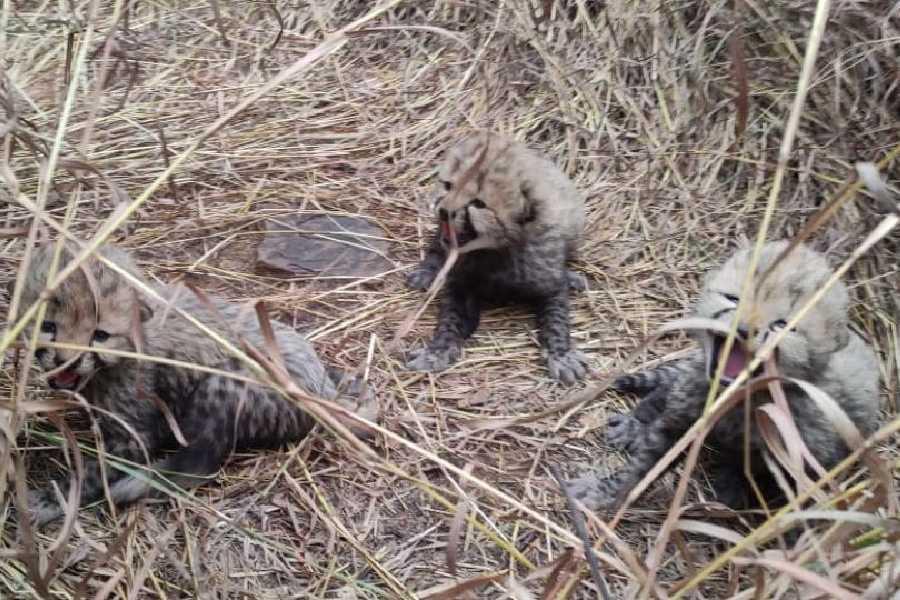India’s cheetah introduction project has registered its third litter, three cubs born to a Namibian cheetah in the Kuno National Park, Madhya Pradesh, but most of the project’s cheetahs remain behind fenced enclosures, not in the wild as the project had envisaged.
The Union minister for environment and forests, Bhupender Yadav, announced on Tuesday that the Namibian cheetah named Jwala has given birth to three cubs. The new litter follows just weeks after another Namibian cheetah named Aasha had given birth to three cubs.
“Congratulations to all wildlife frontline warriors and wildlife lovers across the country,” Yadav posted on X on Tuesday. Yadav had on January 3 described the arrival of Aasha’s cubs as a “roaring success” for project cheetah, a long-term conservation project aimed at introducing clusters of cheetah populations in India’s wilderness.
The environment ministry had brought into Kuno eight cheetahs from Namibia in September 2022 and 12 cheetahs from South Africa in February 2023. They were to be released into the unfenced area of the park after weeks to months of quarantine and observations within fenced enclosures.
But seven adult cheetahs and three of four cubs born in captivity in Kuno in March 2023 have died from various determined and undetermined causes since March 27 last year. Project authorities had attributed the cub deaths in May 2023 to heat and dehydration.
Wildlife officials and other experts have often asserted over the past several months that the cheetahs’ deaths, while unfortunate, should not be viewed as setbacks to the project’s long-term goals which is to establish self-sustaining cheetah populations in the wild.
But sections of wildlife biologists who have criticised the project for not anticipating the large spaces that cheetahs require but are unavailable in Kuno have questioned the long periods of the cheetahs’ captivity in fenced areas within Kuno.
A query sent by this newspaper on Tuesday to two officials associated with the project and an official in the environment ministry asking how many cheetahs are in the open wild and how many in fenced areas has not evoked a reply.
A wildlife biologist not associated with the project said the time spent by the adult cheetahs behind fenced enclosures in Kuno exceeds what is prescribed for the rehabilitation of large carnivores under Namibian regulations.
The Namibian regulations require an adult large carnivore, after being captured from the wild, to be held in a rehabilitation facility “for a maximum period of three months”. However, the rules allow an extended stay if required for veterinary reasons.
“The Namibian regulations won’t apply in India for jurisdictional reasons, but the logic underlying early release into the wild remains valid,” said Ravi Chellam, a large cat specialist and coordinator of the Biodiversity Collaborative, a network of conservation researchers.
“Prolonged captivity and frequent handling, including repeated tranquilisation, affects behaviour and instincts and can impact the overall well-being of wild cats,” Chellam said. “This reduces their fitness to thrive in the wild.”











